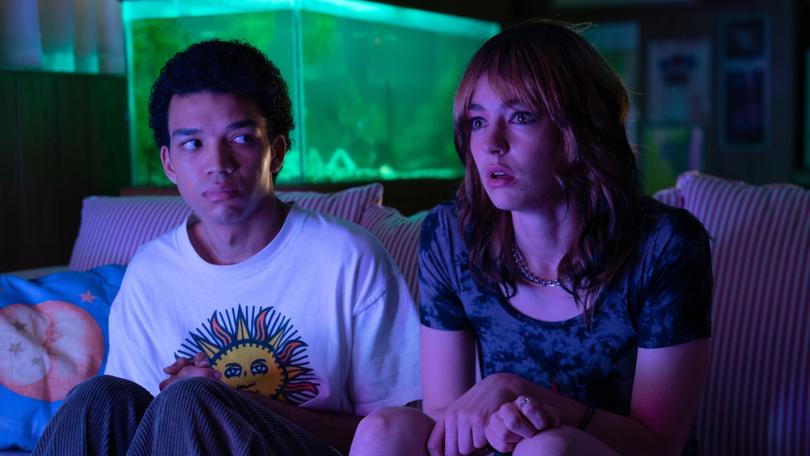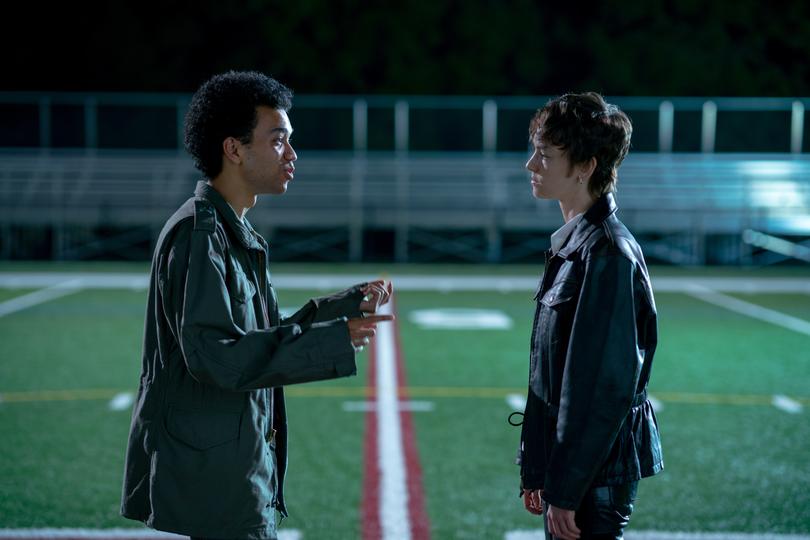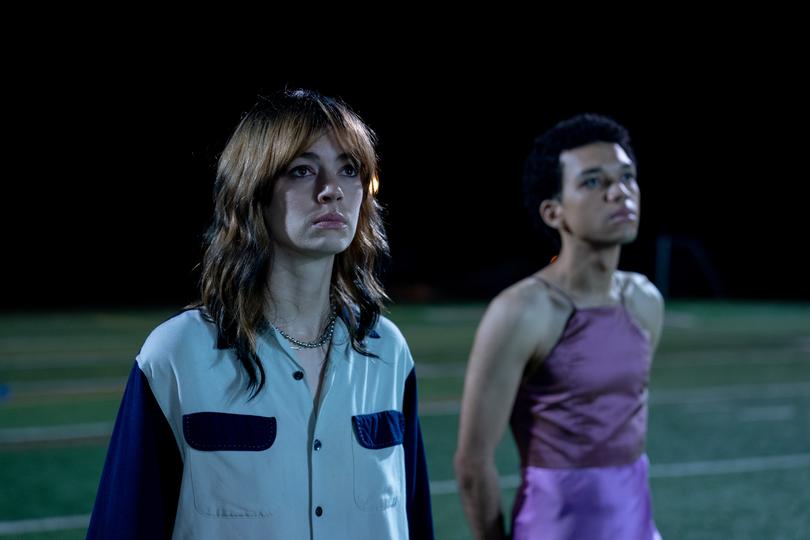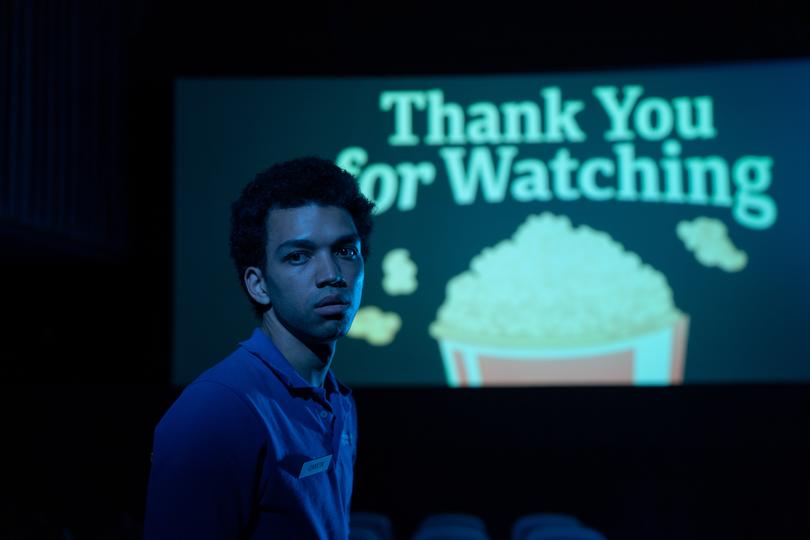I Saw the TV Glow movie review: Trippy movie unlike anything you’ve seen before

The first clue was the book the girl held in her hands, pouring over the pages as she sat cross-legged on the floor of a high school gym.
Emblazoned across the top of the cover were the words “Episode Guide”. Beneath was a photo of two young women, looking defiantly at the camera, and across their chests was the title “The Pink Opaque”.
The girl on the floor was Maddy (Brigitte Lundy-Paine) and she was about to tell Owen (Ian Foreman, and then Justice Smith as the older version) all about her favourite TV show, which features two women with supernatural powers who take down monsters of the week sent down by a Big Bad.
Sign up to The Nightly's newsletters.
Get the first look at the digital newspaper, curated daily stories and breaking headlines delivered to your inbox.
By continuing you agree to our Terms and Privacy Policy.For anyone versed in Buffy the Vampire Slayer, the allusions in I Saw the TV Glow, a trippy and inventive horror film, were already obvious. By the time the fictional TV show-within-the-movie is played for the audience, Buffy fans will immediately recognise the real-life show’s distinctive font in The Pink Opaque’s opening credits.
For I Saw the TV Glow’s writer and director Jane Schoenbrun, a trans filmmaker who uses they/them pronouns, Buffy was a formative pop cultural text, along with the likes of The X-Files and Twin Peaks. All those influences are blaring in their film.

And it makes sense when you hear them talk about how I Saw the TV Glow is an allegory for the transgender experience. Those 1990s TV shows were sometimes a lifeline for outsider kids who always felt something wasn’t quite right, that they didn’t fit into the normative ideal that others felt so at ease with.
In I Saw the TV Glow, Owen meets Maddy during an after-school event and they soon become friends over The Pink Opaque, watching the show at Maddy’s house and connecting to a story that felt more real than their actual lives.
Two years later, Maddy disappears after she tells Owen she plans to run away. The Pink Opaque is cancelled and Owen goes on, but he’s a shell of a person, sleepwalking through a world he doesn’t feel bonded to, escaping into the electronic glow of late-night TV.
When Maddy mysteriously reappears some years later, she tells Owen that she has been living inside The Pink Opaque, and that what they knew as the fictional world is the real one and the lives they had been living is the result of being trapped in a pocket universe by the villain of the show.
She implores Owen to follow her back.

I Saw the TV Glow has its influences, and it’s even upfront about it. It’s not just the Buffy font, but a small supporting role from Amber Benson, who played the Tara, the show’s first out-lesbian character. And the increasingly unnerving final act of the film has a touch of David Lynch.
Even though those shows weren’t always explicitly queer-coded (or, in Buffy’s case, not until the fourth season), LGBTQI kids growing up could see their experiences reflected in the challenges their fictional heroes faced.
It was a time when culture was starting to fracture into niches at the dawn of internet fansites and official episode guide books, and these stories being told had a space to exist and an audience that didn’t feel catered for elsewhere.
Schoenbrun has made an overtly queer story about transitioning – or not transitioning as it were in Owen’s case – and the horrors of living a life you don’t recognise as your own.

For all that it was drawing on, I Saw the TV Glow is a confident, original film, birthed and crafted in a way that feels wholly different to anything you’ve seen before – certainly not in mainstream Hollywood cinema.
Yes, this is an arthouse release with its metaphor-heavy vibes and eccentric visual palette, but it is still from a major indie studio, A24, and is being distributed in Australia by Sony.
It’s an emotionally resonant and evocative work and while it feels scrappy at times and that it maybe doesn’t quite coalesce entirely, it could also just be that I Saw the TV Glow isn’t for everyone. But it doesn’t have to be.
Rating: 3.5/5
I Saw the TV Glow is in cinemas now

